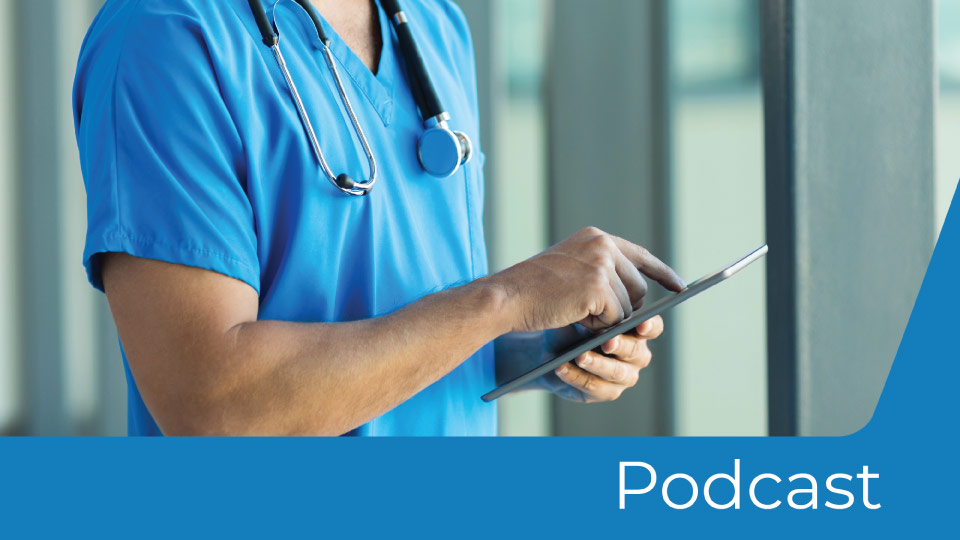Estimated read time: 4 minutes
Health care reform, financial challenges and increasing demands from consumers for more direct and personalized care are some of the factors putting increased pressure on health systems. A shift toward a real-time health system (RTHS) ─ in which health care organizations are more aware, collaborative, secure and patient-centric ─ is critical for success in this new era of health care. A RTHS must use technology to connect people, processes, services and experiences, and empower real-time contextual awareness.
In this blog, we ask three Cerner executives to share their thoughts on what a real-time health system looks like, and how it can improve quality and health outcomes, lower costs, increase patient satisfaction and shape the next generation of care.
“Health care organizations need to become more proactive in using data.”
Lisa Gulker, DNP, RN, ACNP-BC, senior director, health system operations
My role at Cerner has allowed me to use my years of work as a nurse, health care leader and informatician to give suppliers a clinician perspective on the digital transformation in health care. I’ve also been able to explain the importance of predictable excellence ─ responding to the changing conditions in health care using situational and contextual awareness.
Health care organizations need to become more proactive in using data transformed by advanced analytics, and the digitization of health care gives us the tools to do it. Patient information and health system data can help predict patient flow, match staffing needs with patient needs, and create an electronic health record (EHR) that is more aligned with operational functions. Maximizing the potential of this data requires optimizing staff, automating throughput and centralizing operations.
Using centralized clinical operations to manage a workforce, patient flow and assets can make it easier to identify bottlenecks and improve team collaboration. We can use artificial intelligence and machine learning to identify the right caregiver and provide the right information in context, in the right place and in real-time.
“We can use data to improve communication.”
Matt Madden, director, clinical communications
Having the ability to integrate data and streamline communication across any health system is crucial to transforming into a real-time health system and keeping the patient at the center of care. CareAware ConnectTM is unique because it’s a care team communication tool that’s also an extension of the EHR. This technology empowers clinicians to streamline their workflows and keep patients at the center of it all. The ability to put a patient’s entire care team in the hands of a clinician is key. For example, a physician can see the primary nurse assigned to their patient and directly communicate with that care team member in real-time through a call or text.
As the health care industry continues to become more collaborative and patient-focused, I expect to see wider adoption of clinical communication and collaboration strategies. The end result will most likely be more integrated, contextually-aware health systems that improve patient outcomes and operational efficiencies.
“A real-time health system needs effective, reliable security in place.”
Jay Savaiano, senior director, security solutions
Security is a foundation that spans all aspects of the clinical environment from communications to clinical operations ─ all maintaining patient safety at the core.
Without a strong security foundation, every aspect of operations and patient care is at risk. The demands of real-time health systems require reliable, effective security policies and governance to protect critical patient information while also empowering providers to deliver the best possible care.
One effective security measure within real-time health systems is the use of tap-and-go badge readers that offer clinical staff secure, fast and accurate access to patient information and apps without having to repeatedly enter usernames and passwords. These devices also allow automatic log-off when the user is away, providing an additional layer of data protection and privacy.
Another critical security component is to ensure all endpoints used within the health system ─ desktops, tablets, Internet of Medical Things devices, smartphones, laptops and servers ─ are patched and up-to-date with the latest software and firmware for the top level of protection against cyber threats. Once components are supported with updated platforms, the proper deployment of monitoring and cyber threat protection can be leveraged in a productive way.
With the expanse of more and more connected devices within the clinical environment, organizations will need to continue to enhance their security posture. For a real-time health system of the future, it’s essential to have a robust digital security strategy in place to mitigate the risks associated with the delivery of patient care.
To transform care delivery for today and future-proof health organizations for tomorrow, the transition into real-time health systems must occur. Through integrating data throughout the network and within the health system, predicting operational and clinical needs, and securing patient communication and clinical workflows, we can drive the next generation of care.
Effective patient throughput is key to increasing revenue, improving organizational efficiency and providing a positive patient experience. Learn more here.

244d.jpg)


